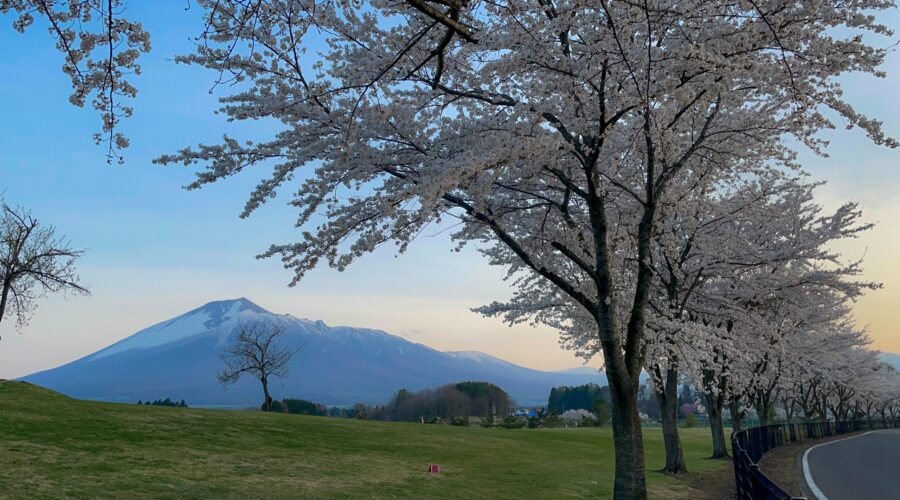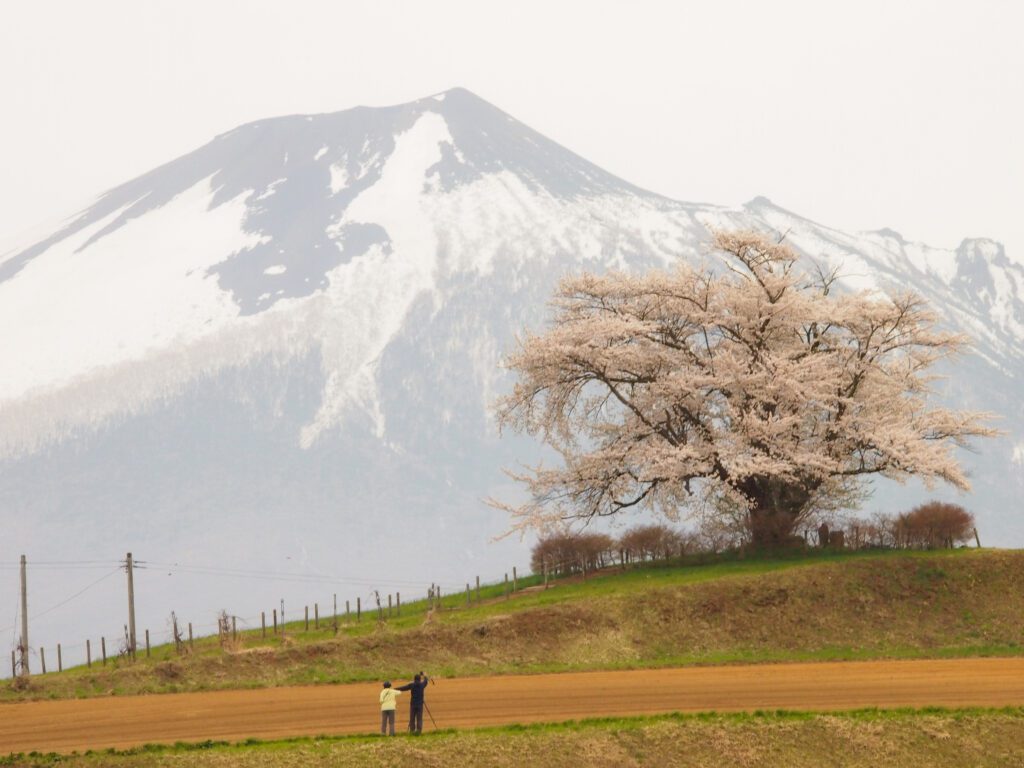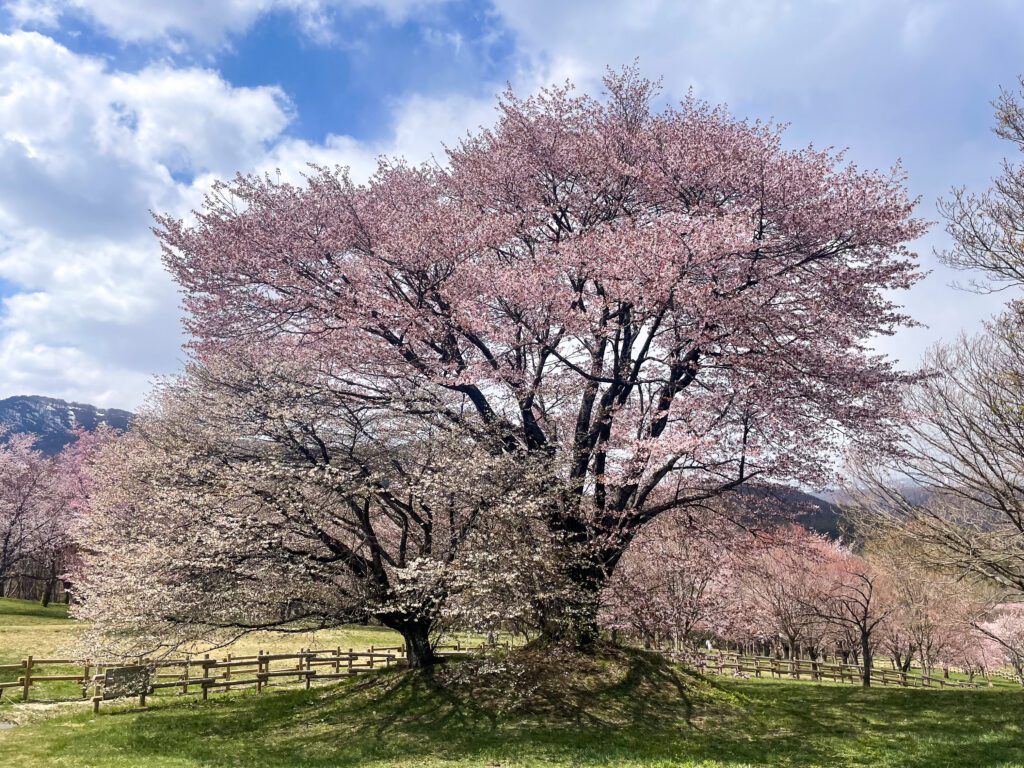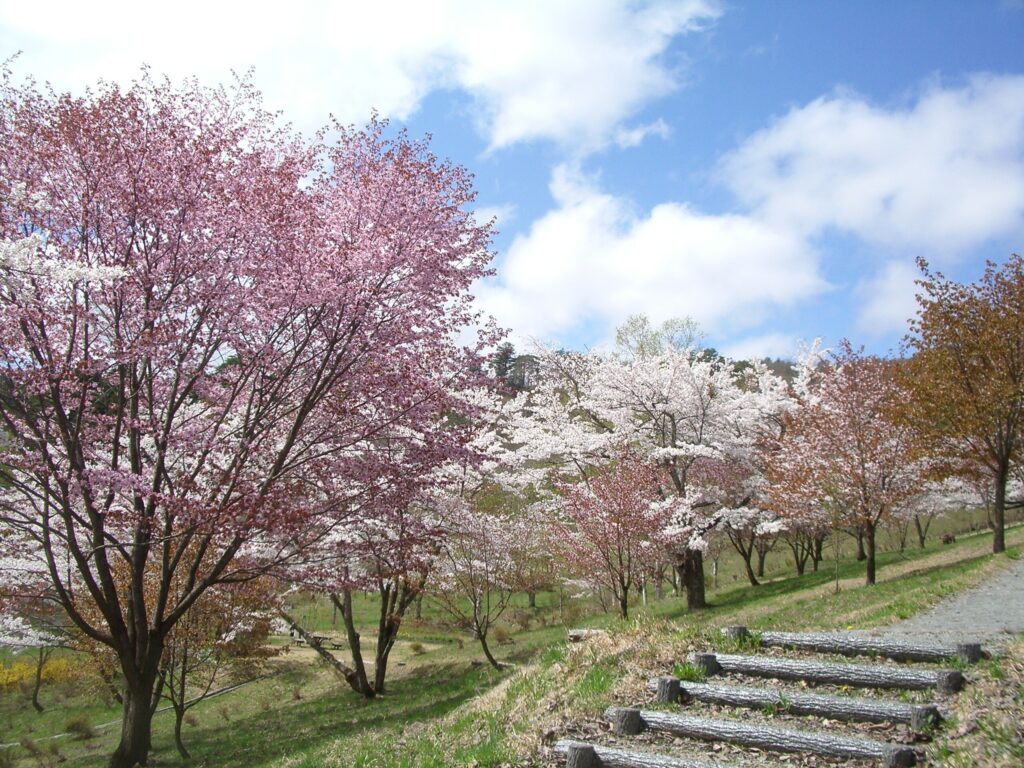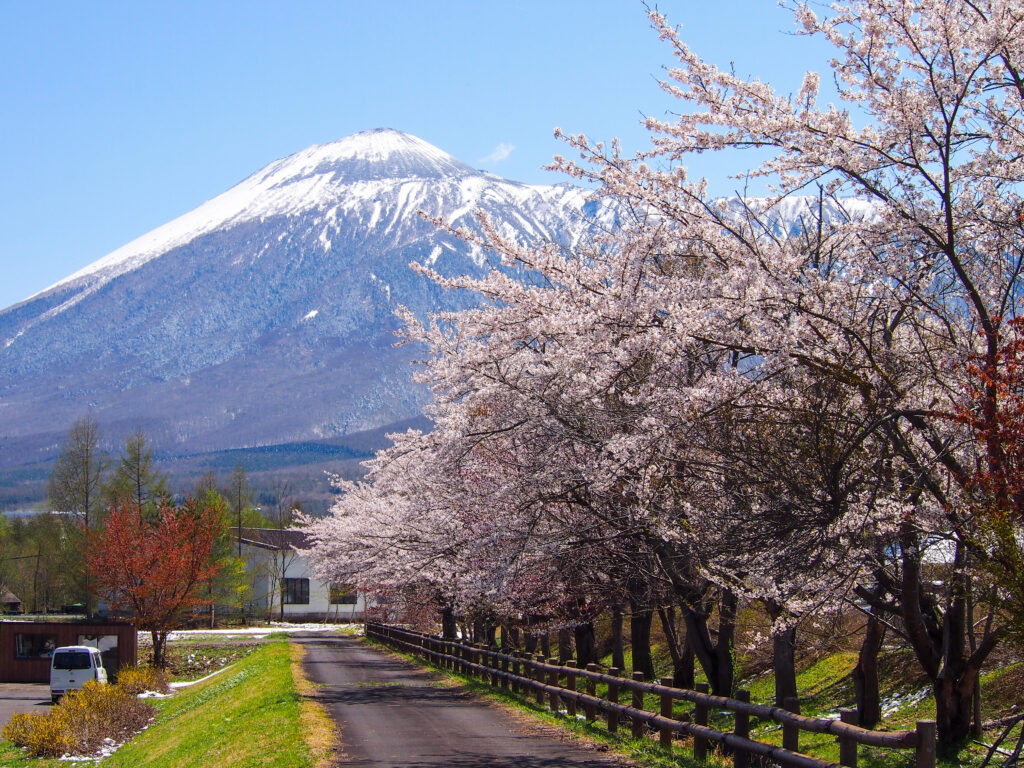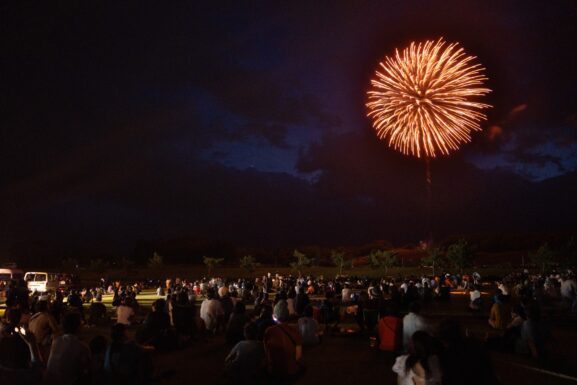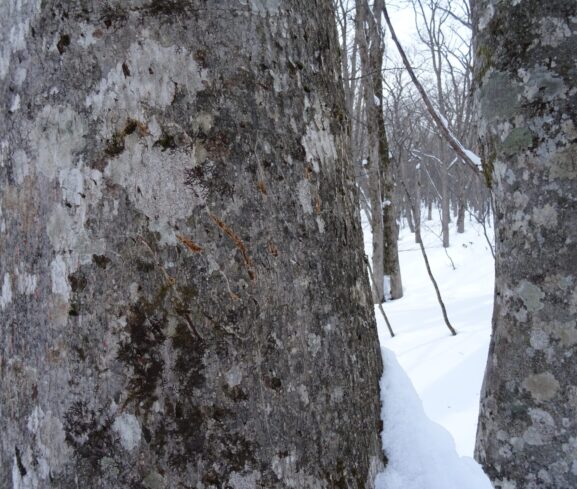Your insider guide to spring in Hachimantai
While snow lingers on the mountain tops, the warmer weather brings with it impressive blooms and the iconic Hachimantai Dragon Eye phenomenon atop Kagami-numa Pond. No matter when you visit in spring, there’s something different to see. Here’s your insider guide to getting even more from your spring holiday to Hachimantai.
Snow – still!
While many ski resorts across the country have finished for the season, Appi Kogen Ski Resort (back-to-back winners of Japan’s Best Ski Resort at the 2022 & 2023 World Ski Awards) remains open for spring skiing until Monday 6th May 2024 (dependent on slope conditions). This means you could see Japan’s famous cherry blossoms and carve up the slopes all in one day – yes, you can have the best of both worlds!
For more information on access and pricing, slope conditions, accommodation and dining options, please see the resort’s official website.

Closed during winter, the Hachimantai Aspite Line is scheduled to reopen at 10:00 a.m. on Monday 15th April with the Hachimantai Jukai Line reopening from 10:00 a.m. Friday 26th April (night-time road closures may be in place dependent on conditions). After the roads are cleared, a wall of snow rises up several meters on both sides creating a frozen corridor. The Hachimantai Aspite Line (between Akita and Iwate prefectures) forms the longest ‘snow corridor’ in Japan with a total length of approximately 27 kilometers and can be enjoyed until around mid-May. We recommend a leisurely drive to Hachimantai Summit to fully appreciate this incredible sight!
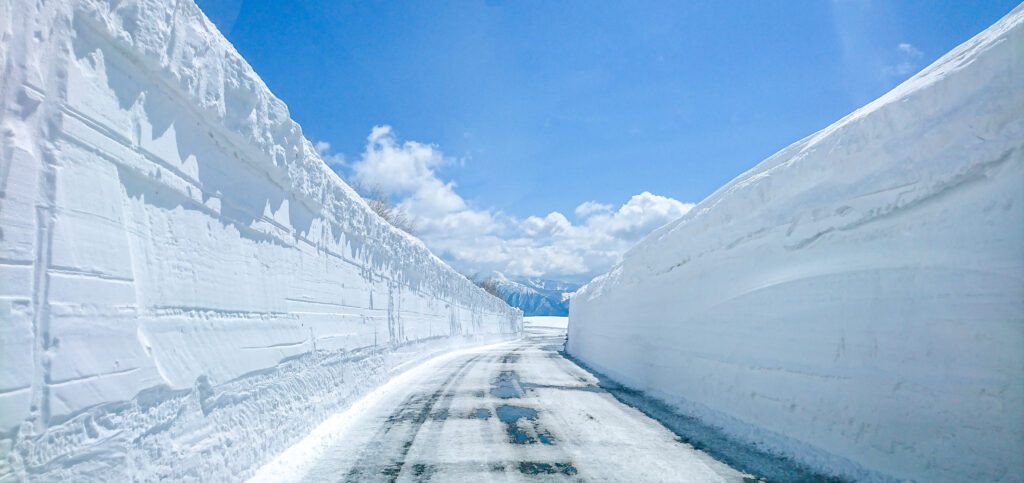
Cherry blossoms minus the crowds
As the spring weather sets in across this island nation, a sort of sakura (cherry blossom) fever seems to sweep Japan. Sakura-themed drinks and sweets hit stores and the cherry blossom forecast is broadcast on the daily news. Hachimantai’s location in the northern Tohoku region means the blooms arrive here later than further south and are a great option for those wanting to experience the famous pink hues without the crowds.
While the cherry blossom forecast is a notoriously fickle affair, in 2024 Hachimantai’s cherry blossoms are expected to bloom from mid-April which is a little earlier than average. Here’s your comprehensive guide to where and when to see the cherry blossoms across town:
- Row of Cherry Trees along Prefectural Highway 233 (Google Maps): Mid-April
- Cherry trees flank either side of this road that gently climbs towards Yakehashiri Lava Flow and Mt. Iwate.
- Solitary Cherry Tree of Inai (Google Maps): Mid- to late April
- This Yoshino cherry tree sits atop a small hill with Mt. Iwate looming large in the background.
- Please note that there are no parking lots in this area and visitors should be careful not to obstruct the flow of traffic.
- Iwate Prefectural Citizens’ Forest (Google Maps): Late April to early May
- This 360 hectare forest park runs aside Matsukawa Gorge. There are about 300 Sargent’s cherry trees as well as other varieties planted here concentrated in Everyone’s Square.
- The annual Hachimantai Sakura Festival will be held here from Friday 3rd to Sunday 5th May 2024.
- Hachimantai Sakura Park (Google Maps): Late April to early May
- As the name suggests, this park adjacent to Matsuo-Hachimantai Visitor Center has plenty of cherry blossoms. With a great view of Mt. Iwate, this is a good place to lay out a tarp and enjoy a hanami-style picnic (a.k.a. cherry blossom viewing party).
- Sakuramatsu Park (Google Maps): Early May
- Local legend says that cherry blossoms once bloomed magically from the pine trees here. While the origins of that story are unknown, there are actual cherry trees blooming throughout this park that also encompasses Sakuramatsu Shrine and Fudo Falls.
- The annual Fudo Falls Festival will be held here on Friday 3rd May 2024.
- Solitary Cherry Tree of Uwabo (Google Maps): Early to mid-May
- Sitting alone in a paddock this Korean mountain cherry has Mt. Iwate as its backdrop.
- Please note that the cherry tree is located on private property and entry is prohibited. As there are no parking lots in this area, visitors should be careful not to obstruct the flow of traffic.
Please note that bloom periods are dependent on weather conditions and may change. You can view up-to-date information on blossom conditions here.
The famous Hachimantai Dragon Eye
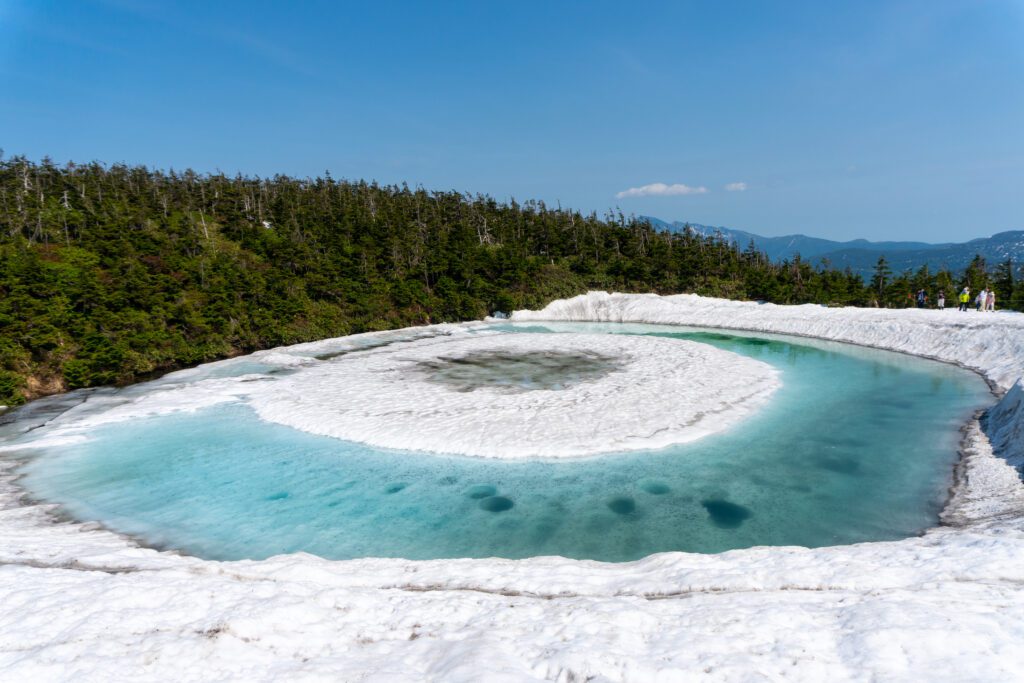
One of the most iconic sights of Hachimantai, the annual phenomenon of the Dragon Eye is a must-see in spring. Near Hachimantai Summit, the snow melting on Kagami-numa Pond resembles a giant eye staring back at you. Typically visible from mid-May to mid-June, it’s about a 20-minute hike from Hachimantai Summit Rest House parking lot. While access to Towada-Hachimantai National Park gradually opens up over April and May, as there can still be ice and snow on the mountain trails at this time, we recommend wearing long, waterproof shoes.
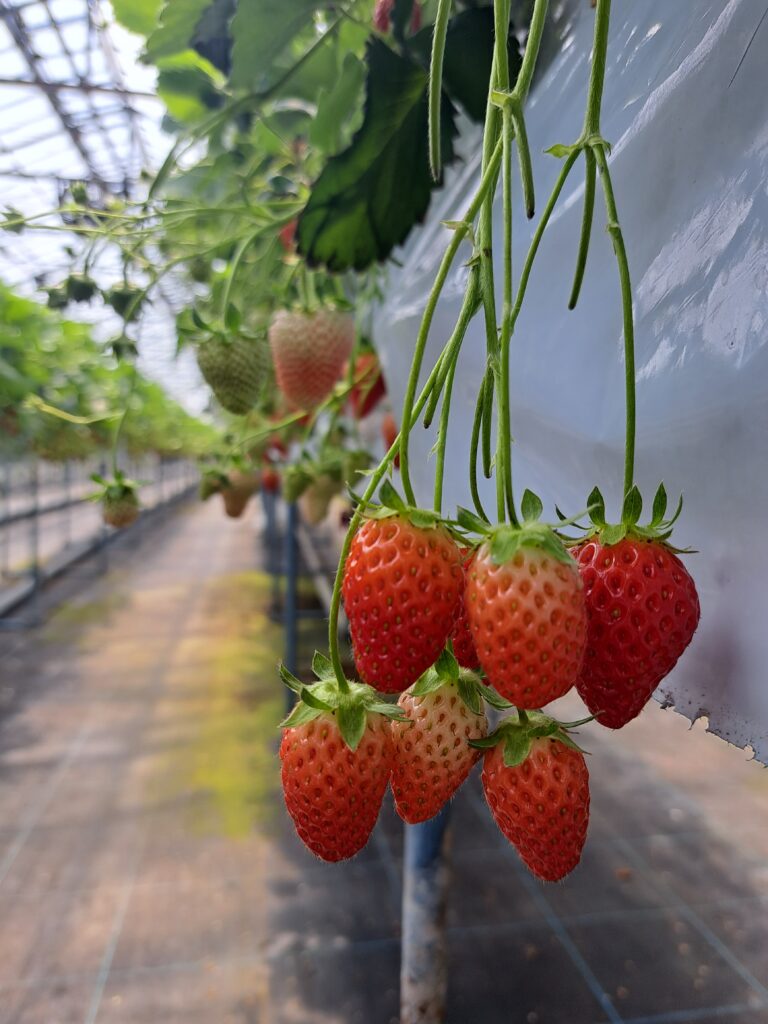
All-you-can-eat fresh strawberries
- Open daily 10:00 a.m.-3:00 p.m. until late June (bookings not required, however, it is worth calling ahead: 0195-76-4458, as they may close early depending on availability)
- Adult: ¥2,200 (incl. tax); Child: ¥1,800; Infant: ¥1,100
Final tips:
- Several cultural events are held throughout spring to welcome the warmer weather – follow @trip8jp on Facebook and Instagram to stay up to date with everything that’s happening.
- Known as Golden Week, a string of closely spaced public holidays falling at the end of April and start of May is peak season for domestic travel. Book accommodation and transport in advance if travelling during this period.
- Winter tires are required into spring, especially on mountain roads. If renting a car, check that it is suitably equipped for your intended route.
All information listed was confirmed at the time of publication. No responsibility is taken for changes made by third parties after this time.

